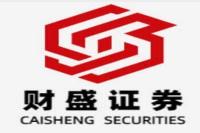China's Economic Pulse: Navigating a Complex Landscape in 2024
Meta Description: Dive deep into China's 2024 economic performance, analyzing key indicators like CPI, industrial production, and policy shifts. Explore the impact on sectors including real estate, finance, and technology, with expert insights and data-driven analysis.
Wow, China's economy – it's a rollercoaster ride, isn't it? One minute you're soaring with record-breaking新能源 (new energy) vehicle sales, the next you're bracing yourself for adjustments in the real estate market. This isn't just another economic report; it's a deep dive into the complexities of navigating China's economic landscape in 2024. We'll unpack recent announcements from the Central Committee of the CCP, the National Bureau of Statistics (NBS), and key industry players, providing you with a comprehensive overview informed by firsthand observations and data analysis. Prepare for a journey filled with insightful commentary, surprising trends, and a clear understanding of the forces shaping China's economic future. Forget dry statistics – we’ll cut through the jargon, revealing the human stories behind the numbers. We'll explore the implications for investors, businesses, and individuals alike, offering a balanced perspective grounded in facts and seasoned with a touch of real-world experience. Get ready to unravel the mysteries of China's economic pulse – you won't want to miss this!
Key Economic Indicators: A Closer Look
The recent economic data paints a mixed picture. While the November CPI (Consumer Price Index) showed a modest 0.2% year-on-year increase, indicating relatively stable inflation, the PPI (Producer Price Index) continued its downward trend, declining by 2.5%. This divergence is noteworthy, suggesting potential challenges in translating producer price adjustments to consumer prices. Let's break it down further:
-
CPI: The 0.2% increase is a relatively low figure, suggesting that inflationary pressures are currently under control. However, it's crucial to monitor this closely for any signs of future changes.
-
PPI: The continued decline in the PPI indicates softer demand and potential margin pressures for businesses. This is something that the government will likely need to address through further policy adjustments.
-
Industrial Production: While the overall picture remains positive, the slowdown in some key sectors needs attention. The government's focus on boosting domestic demand and supporting technological innovation will be key here.
The recent drop in the 10-year government bond yield to below 2% signifies a shift towards a more accommodative monetary policy. This is a clear signal that the government is prioritizing economic growth and stability. This move could stimulate borrowing and investment, but it also carries risks that must be carefully managed.
Government Policy Response: A Balancing Act
The recent meetings of the Central Committee of the Communist Party of China (CCP) highlighted the need for a more "proactive" macroeconomic policy. This translates into a commitment to:
-
Expanding Domestic Demand: This is a crucial step to counterbalance any weakening external demand. Stimulating consumer spending and investment will be key. This is likely to involve both monetary and fiscal measures.
-
Promoting Technological & Industrial Innovation: China's long-term economic growth strategy hinges on technological advancement and industrial upgrading. This will involve increased investment in R&D, support for emerging industries, and a focus on high-value-added manufacturing.
-
Stabilizing the Real Estate and Stock Markets: These sectors are vital for overall economic stability. Targeted measures to address vulnerabilities and improve investor confidence will be essential.
The government is clearly aiming to strike a delicate balance between supporting growth and managing risks. This involves a careful calibration of fiscal and monetary policies, a sophisticated approach that requires a deep understanding of the nuances of the Chinese economy.
The New Energy Vehicle (NEV) Boom: A Bright Spot
One undeniable success story is the NEV sector. The November sales figures were truly astounding, exceeding expectations with a 50% year-on-year increase. This demonstrates the growing demand for electric vehicles and highlights the dynamism of this rapidly expanding industry. However, maintaining this momentum requires addressing challenges like charging infrastructure and battery supply chains.
-
Retail Sales: The strong retail sales figures suggest that consumer demand for NEVs is robust and is potentially driving a significant portion of the overall economic growth.
-
Growth Outlook: While challenges remain, the ongoing investment in NEV technology and infrastructure suggests that the sector will continue to be a significant driver of economic growth in the coming years.
Humanoid Robots: A Glimpse into the Future
The recent surge in interest in the A-share market's humanoid robot concept is a fascinating development. This sector is poised for significant growth, with many experts predicting 2025 as the year of commercialization. However, we need to be realistic. While the potential is enormous, there are significant technical and economic hurdles to overcome. This is an area ripe for disruptive innovation and presents opportunities for both domestic and international players. Key areas to watch include:
-
Supply Chain: The development of robust and cost-effective supply chains for critical components like actuators, sensors and AI software is vital for the successful mass production of these robots.
-
Competition: The global race to develop advanced humanoid robots is intense, and Chinese companies need to stay competitive by consistently innovating and improving their products.
-
Regulatory Landscape: The development of a clear and supportive regulatory framework is crucial for the growth of this sector.
Other Key Developments
Several other significant developments have shaped China’s economic landscape in recent months:
-
Increased cooperation with international economic organizations: This reflects China’s commitment to global cooperation and its role in the world economy.
-
Regulatory scrutiny of technology giants: This shows the government's determination to maintain a fair and competitive market.
-
Advancements in medical technology: The successful clinical trial of a brain-computer interface device shows China's progress in high-tech medical research.
Frequently Asked Questions (FAQs)
Q1: What is the biggest challenge facing the Chinese economy right now?
A1: The biggest challenge is maintaining a delicate balance between stimulating growth and managing risks. The government needs to find the right level of policy support to boost demand without triggering excessive inflation or creating new financial vulnerabilities.
Q2: How will government policies impact the stock market?
A2: Government policies are likely to have a significant impact. The more accommodative monetary policy could lead to increased investor confidence and higher stock prices, but the situation remains volatile.
Q3: What is the outlook for the real estate sector?
A3: The outlook for the real estate sector remains uncertain. The government is taking steps to stabilize the market, but a full recovery will likely take time.
Q4: How does China's economic performance compare to other major economies?
A4: China's economic growth rate remains relatively high compared to many other major economies, but growth is slowing. The government's focus on domestic demand and technological innovation should help maintain a competitive edge.
Q5: What are the implications for foreign investors?
A5: Foreign investors should carefully monitor the economic situation and government policies. While opportunities exist, it’s important to understand and manage the risks associated with investing in China.
Q6: What are the long-term prospects for the Chinese economy?
A6: The long-term prospects are positive, driven by factors such as a large and growing population, a rapidly expanding middle class, advancements in technology, and a commitment to economic reform. However, challenges will remain in terms of managing risks and maintaining a sustainable growth trajectory.
Conclusion
Navigating China's economic landscape in 2024 requires a nuanced understanding of the interplay between government policies, market forces, and global dynamics. While challenges exist, the commitment to technological innovation, the expansion of domestic demand, and the proactive approach of the government offer reasons for measured optimism. The resilience of the Chinese economy, coupled with its consistent drive for progress, ensures it remains a fascinating and pivotal player on the global stage. Stay informed, stay adaptable and remember – the journey is just as important as the destination.



